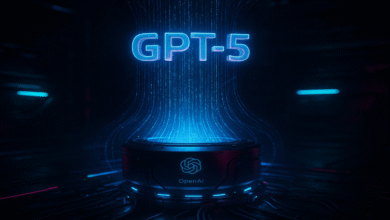JKUHRL-5.4.2.5.1J Model: The Future of Data Processing and Predictive Analytics

Data processing and predictive analytics have become crucial for industry decision-making in today’s rapidly evolving technological landscape. The JKUHRL-5.4.2.5.1J model is a groundbreaking innovation that revolutionizes data analysis and utilisation. With advanced machine learning algorithms, quantum computing integration, and robust security features, this model has become a potent financial instrument for healthcare, energy, and other critical sectors. This article’s advantages, applications, and features will be examined in future developments of the JKUHRL-5.4.2.5.1J model, showcasing why it is a game-changer in modern data analytics.
What Is the JKUHRL-5.4.2.5.1J Model?
The JKUHRL-5.4.2.5.1J model is an advanced data processing system that leverages quantum computing and artificial intelligence to enhance predictive capabilities. It is intended to manage an immense volume of data accurately, ensuring efficiency and precision in various industries. The model is known for its scalability, real-time data processing, and security features, making it an optimal solution for organizations seeking to enhance their operations.
Key Features of the JKUHRL-5.4.2.5.1J Model
- High Accuracy & Precision – The model employs sophisticated algorithms for real-time data analysis, reducing errors and improving decision-making processes.
- Quantum Computing Integration – Unlike traditional data models, the JKUHRL-5.4.2.5.1J incorporates quantum computing, allowing it to process large datasets faster and more efficiently.
- Advanced Security Mechanisms – This model ensures data protection and confidentiality with multi-factor authentication and encryption.
- Modular Architecture – The adaptable design allows businesses to customize functionalities according to their needs.
- User-Friendly Interface – Developed for technical and non-technical users, its interface ensures seamless user interaction.
- Environmental Sustainability – The model optimizes energy usage, reducing carbon footprint and operational costs.
Applications of the JKUHRL-5.4.2.5.1J Model
Finance
In the financial sector, the JKUHRL-5.4.2.5.1J model is extensively used for:
- Stock Market Prediction – Analyzing historical trends to forecast market movements.
- Fraud Detection – Identifying anomalies in financial transactions to prevent cyber fraud.
- Risk Management – Assessing potential financial risks to ensure better investment strategies.
Healthcare
Medical institutions and research facilities utilize this model for:
- Disease Prediction – Early detection of chronic illnesses through patient data analysis.
- Personalized Treatment Plans – Tailoring medication and therapies based on individual genetic profiles.
- Real-Time Patient Monitoring – Continuously analyzing patient vitals to prevent emergencies.
Weather Forecasting & Environmental Science
The model plays a vital role in climate research by:
- Predicting Natural Disasters – Anticipating hurricanes, earthquakes, and floods.
- Climate Change Modeling – Simulating global temperature shifts and CO2 levels.
- Resource Management – Assisting governments in optimizing water and energy usage.
Energy Sector
Energy companies rely on this model for:
- Optimizing Energy Distribution – Predicting consumption trends to improve efficiency.
- Renewable Energy Integration – Enhancing solar and wind energy storage solutions.
- Smart Grid Management – Managing energy grids to prevent blackouts and inefficiencies.
Supply Chain & Logistics
Businesses in retail, manufacturing, and transportation use the model to:
- Enhance Inventory Management – Forecasting demand to avoid stock shortages.
- Optimize Delivery Routes – Enhance petroleum efficiency and minimize expenditures and logistics efficiency.
- Predictive Maintenance – Monitoring machinery health to prevent costly repairs.
Smart Cities
The JKUHRL-5.4.2.5.1J model contributes to innovative city initiatives by:
- Traffic Flow Optimization – Analyzing traffic data to reduce congestion.
- Energy Efficiency – Predicting electricity demand in urban areas.
- Public Safety Monitoring – Enhancing surveillance and emergency response mechanisms.
Advantages of the JKUHRL-5.4.2.5.1J Model
- Enhanced Decision-Making – Delivers precise, real-time insights to improve business and research strategies.
- Improved Efficiency – Automates data processing, reducing workload and operational costs.
- Cost-Effectiveness – Predictive maintenance and risk analysis help save millions in potential losses.
- Scalability – The model can adapt to different data sizes, making it suitable for small and large enterprises.
- Future-Proof Design – Continuous upgrades ensure long-term sustainability.
Challenges and Future Prospects
Challenges
- High Implementation Cost – Advanced computing power requires significant initial investment.
- Training & Adoption Barriers – Employees need technical expertise to leverage the model’s full potential.
- Data Dependency – Predicts’ accuracy depends on input data’s quality and volume.
Future Developments
- Enhanced AI & Deep Learning – Future versions will include self-learning capabilities to refine predictions over time.
- Greater Quantum Computing Integration – Improved quantum capabilities will further increase processing speed.
- Automated Decision Systems – The model is expected to support autonomous decision-making across industries.
- Improved User Interfaces – Future updates will focus on simplified dashboards and interactive analytics tools.
Conclusion
The JKUHRL-5.4.2.5.1J model is paving the way for a new era in data analytics and predictive modelling. Its wide-ranging applications, high accuracy, and integration with quantum computing make it a crucial asset in finance, healthcare, energy, and innovative city development.
Despite some challenges, the future of this model is promising, with ongoing enhancements making it even more powerful. Whether enhancing business efficiency, predicting natural disasters, or advancing healthcare analytics, the JKUHRL-5.4.2.5.1J model redefines the landscape of data-driven decision-making.
Frequently Asked Questions (FAQs) on the JKUHRL-5.4.2.5.1J Model
What makes the JKUHRL-5.4.2.5.1J model different from traditional data processing systems?
The JKUHRL-5.4.2.5.1J model stands out due to its quantum computing integration, real-time predictive analytics, and advanced machine learning algorithms. Unlike traditional systems, it processes vast datasets with higher accuracy and speed while offering enhanced security and scalability.
How does the JKUHRL-5.4.2.5.1J model improve decision-making across industries?
This model provides precise insights by leveraging AI-driven analytics and real-time data processing. It helps businesses and organizations in finance, healthcare, energy, and supply chain management make data-driven decisions with reduced risks and improved efficiency.
What are the security features of the JKUHRL-5.4.2.5.1J model?
The model incorporates multi-factor authentication, end-to-end encryption, and secure cloud integration, ensuring data privacy, confidentiality, and protection against cyber threats. Thus, it is a trusted solution for sensitive data applications.
What are the challenges associated with implementing the JKUHRL-5.4.2.5.1J model?
Despite its powerful capabilities, the model faces challenges like high implementation costs, technical training requirements, and data dependency for accurate predictions. However, ongoing advancements aim to streamline adoption and reduce costs over time.
What are the future developments expected for the JKUHRL-5.4.2.5.1J model?
Future enhancements will focus on self-learning AI, greater quantum computing integration, automated decision-making, and improved user interfaces, ensuring even more efficient and intelligent data analytics solutions.
You May Also Read: P1nsights.co 877-917-6774 CA USA: Unlocking the Power of Data Analytics




